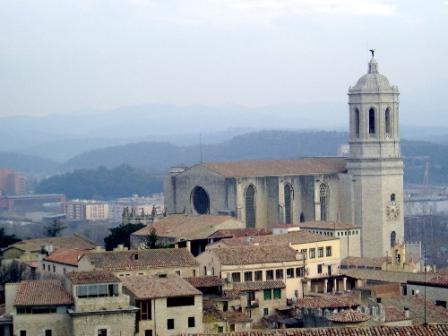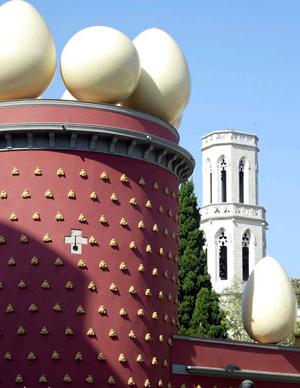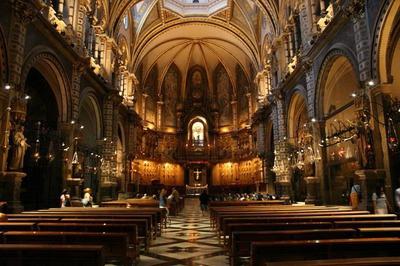Girona (Spain): what to see the transit travelers
Now, when more and more independenttravelers fly by budget airlines, in the "road map" of tourist routes a new point appeared - the airport of Girona. Compared with the major tourist centers, like Granada, Madrid or Barcelona, it may, at first glance, seem like a small, unremarkable settlement, just a place to wait for the desired voyage. However, it's worthwhile to stop here.

It is well known when the city was founded: in 75-76 years. Roman legionaries in record time built the fortress Gerunda, which was later destined to be named after Girona. Spain at that time was part of the Roman Empire, and the fortress was supposed to guard the highway Via Augusta, going from Rome to Seville.
Since that era, fragments of ancient fortifications and, incidentally, a piece of the once important "Road of Augustus" have been preserved.
The railway station (where shuttles arrive from the airport) is located in a new city, on the other side of the river Onyar. You need to go to the river, along the way admiring beautiful houses in the Art Nouveau style.
Beyond the river, on the steep and high Cape of the Capuchins, is the old Girona. Spain considers it "the first boulevard to Europe", as it is close to the cordons of France.
It is worth to admire the old houses on the promenade of Onyara. Many of them were built in the late Middle Ages and were part of the city fortifications.
House towers are rising right out of the water like unapproachable rocks. By the way, all of them are still inhabited. It's funny to see how the century after century brought corrections to the decoration of the ancient bastions.

We pass the bridge and go into the complex labyrinthmedieval streets. In order not to get lost, it would be nice to visit the center of tourist information first and take a map of the city of Girona there. Spain very much welcomes tourists, and, most likely, the employee of the center on good English will tell to you that it is necessary to visit first of all. We recommend to begin acquaintance with Girona, going around the perimeter of its fortress walls. They were built by the Romans, then strengthened the Moors, completed the Castilians, according to the requirements of military equipment. From the towers, the city is visible on the palm of your hand.
Near the cathedral get off the fortifications. On the way, you will see Arab baths, which have nothing to do with the Moors. They were built by Christians in the 12th-13th centuries, after the Reconquista, as a decorative imitation of the Muslim term. Girona, whose attractions are numerous, is especially famous for its main cathedral. We can say that this is a "solanka team" in architecture. First a mosque, then a Romanesque basilica - in it the elements of Gothic, Baroque and Classicism were whimsically mixed. The temple was built very long and was completely completed only in the XIX century. But the church entered the history of architecture due to the width of its main nave - 23 meters (wider only in St. Peter's Cathedral in Rome). A staircase of 90 steps leads to the temple, at the time of construction (the 17th century) it was the largest staircase in the whole kingdom.

"Call" or the medieval Jewish ghetto - moreone bright sight of the city of Girona. Spain drove the Jews out of the kingdom during the reign of Isabella of Castile - a fanatical Catholic. Houses in the ghetto were given to Christian beggars who were too poor to rebuild them. Thus, the ghetto remained in its original form.








